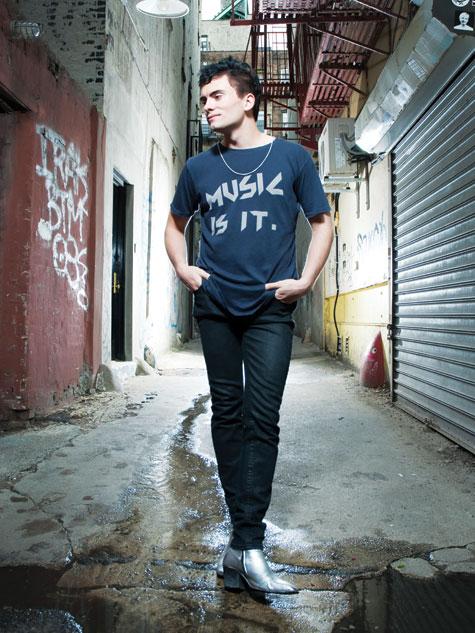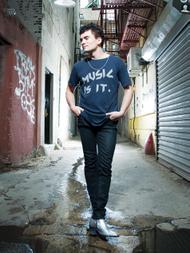Cameron Carpenter
With the Edmonton Symphony Orchestra, Conucted by William Eddins
Friday, May 6, 8 p.m.
Winspear Centre
Tickets at the Winspear Centre
Acclaimed in the ESO’s press kit as “the most exciting talent to emerge in decades,” American organ virtuoso Cameron Carpenter will demonstrate his virtuosity on the Stuart Davis Concert Organ in works by Cole Porter and George Gershwin as well as an extended work of his own, Der Skandal for Organ and Orchestra, which will be given its North American debut in Edmonton. Called by some as ”the bad boy of the pipe organ,” perhaps as a consequence of his somewhat iconoclastic approach as a showman in his unabashed manner of performing music from the organ repertoire, he is the first solo concert organist in history to have ever been nominated for a Grammy Award.
Carpenter eschews any references to the personification of the pipe organ as “the King of Instruments.” In his own words, “from an economic standpoint, the organ is the pauper of instruments. It is the most over-looked, under-utilized, poorly paid field of music. The organ is not the king of instruments in that sense. The voice is the king of instruments. It is the most politically powerful.” Carpenter prefers to promote the organist and the music, rather than the instrument itself.
As a child Carpenter was initially attracted to the organ visually rather than by its music.
“I saw a picture of a silent movie organist from the 1920s in an encyclopedia, and unlike a church organist who probably would be dressed comparatively humbly, this guy was wearing a tuxedo and playing a very ornately carved organ in this ornate music palace,” says Carpenter. “The general impression was one of complete glamour and performance.”
Carpenter spoke at length about his full-length concert piece The Scandal. “Scandal is the child of several things,” says Carpenter. “First and foremost, it’s my biggest statement so far as a composer. It’s not programmatic music; it’s founded on the concept of the appropriation of form from one place in which it occurs and the application to sort of hi-jacking and utilization of it at the musical end. One of the impediments to the absorption of structure by the modern listener is the relative unfamiliarity with classical structures.”
He is a firm believer in the traditional applications of form and its emergence in music, both from the perspective of a performer and as a listener, or absorber of art.
Carpenter goes on to explain the genesis of the work’s title.
“The form of the piece, which is absolutely clear upon listening, is more or less lifted piece-meal from the form that most public scandals take,” says Carpenter. “The beginning of the piece is an allegory to the breaking of a major scandal, which is this uproar with various forces contradicting each other. You have the organ and the orchestra pitted against each other and this works extremely well.”
The subsequent investigations into the details of the scandal provide an allegory for the development of the piece with respect to its form.
In the work, the organ represents the subject of the scandal. The orchestra represents the “Age of Anxiety.” A solo cello plays the role of a sympathetic character.
The second half of the programme will be a recital of solo organ works.
Carpenter also designs his own stage outfits and decorates his shoes with Swarovski crystal, so the audience should be prepared to expect anything, both musically and sartorially.



Post the first comment: (Login or Register)